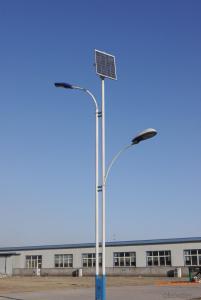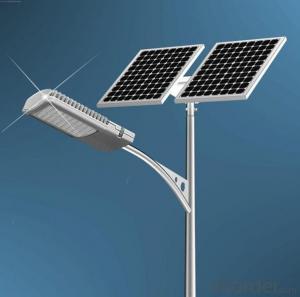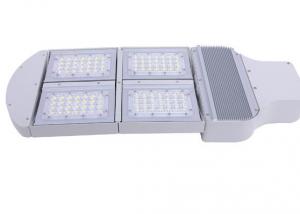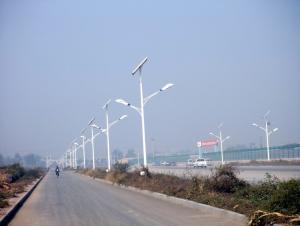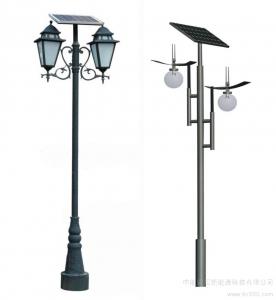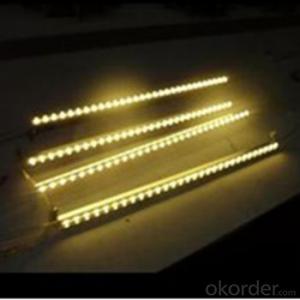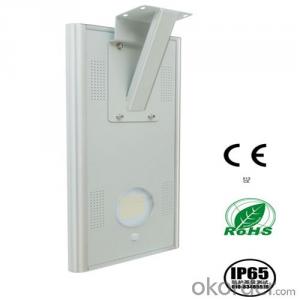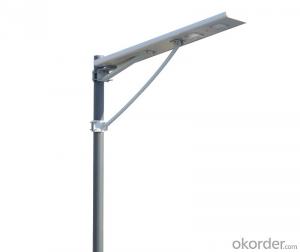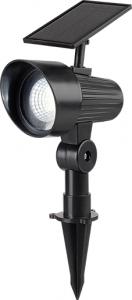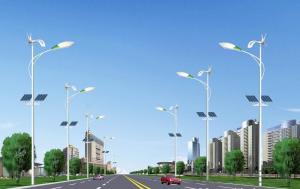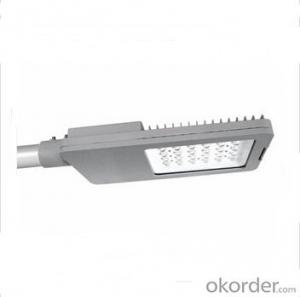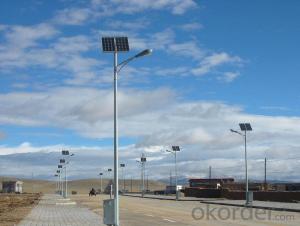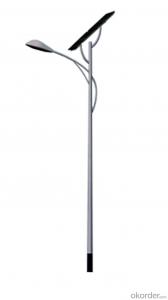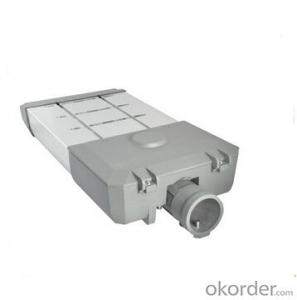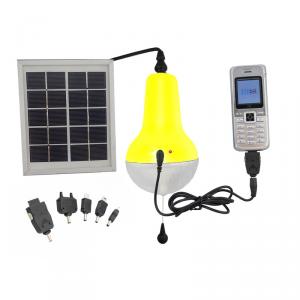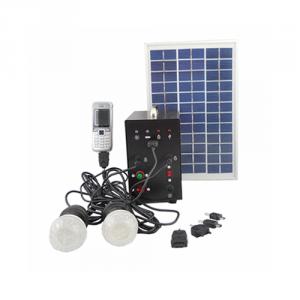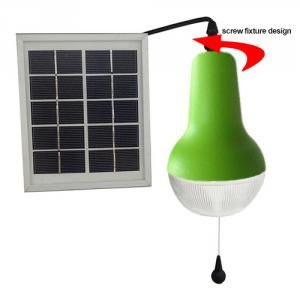Solar Light Trees - New Energy Solar Street Light Product
- Loading Port:
- Ningbo
- Payment Terms:
- TT or LC
- Min Order Qty:
- 1 set
- Supply Capability:
- 5000 set/month
OKorder Service Pledge
OKorder Financial Service
You Might Also Like
1, Product desciption
Inverter circuits designed to produce a variable output voltage range are often used within motor speed controllers.
The DC power for the inverter section can be derived from a normal AC wall outlet or some other source. Control and feedback circuitry is used to adjust the final output of the inverter section which will ultimately determine the speed of the motor operating under its mechanical load.
Motor speed control needs are numerous and include things like: industrial motor driven equipment, electric vehicles, rail transport systems, and power tools. (See related: variable-frequency drive ) Switching states are developed for positive, negative and zero voltages as per the patterns given in the switching Table.
The generated gate pulses are given to each switch in accordance with the developed pattern and thus the output is obtained.
Solar power is energy from the sun. "Solar" is the Latin word for "sun" and
And Powerful source of energy. Without it, there will be no life.
Solar energy is considered as a serious source of energy for many years
of the vast amounts of energy that is made freely available, if harnessed by modern technology.
A magnifying glass can be used to heat up a small amount of water.
The short piece of copper tube is sealed at one end and filled with water.
And magnifying glass is then used to warm up the pipe.
Using more than one magnifying glass will increase the temperature more rapidly.
2, Features of the product
Inverters convert low frequency main AC power to higher frequency for use in induction heating.
To do this, AC power is first rectified to provide DC power. The inverter then changes the DC power to high frequency AC power. Due to the reduction in the number of DC Sources employed, the structure becomes more reliable and the output voltage has higher resolution due to an increase in the number of steps so that the reference sinusoidal voltage can be better achieved.
This configuration has recently become very popular in AC power supply and adjustable speed drive applications. This new inverter can avoid extra clamping diodes or voltage balancing capacitors. There are three kinds of level shifted modulation techniques, namely:
The first thing to figure out is the length of road in need of street lights.
This can be a small entrance road only a couple hundred of feet long to miles of streets through an area. Does the area currently have any type of lighting available.
What is the reason for needing street lights in this area
Is the electrical grid already nearby or would you need to call in the power company to bring in electrical lines.
If the electric needs to be brought to the area, how much is this going to cost? Depending on how far the grid electric is from the location of the needed lighting, this can be quite expensive.
How much lighting is needed on the street? Do the lights need to be dark sky compliant.
Do the street lights need to run from dusk to dawn or for only a specified number of hours at night.
Are the street lights able to dim in the middle of the night and still provide enough lighting.
These questions need to be answered before you can decide on how many lights you will need to complete the project.
3, Detailed Specification
| ||||||||||||||||||||||||||||||||||||||||||||||||
4, Product Image
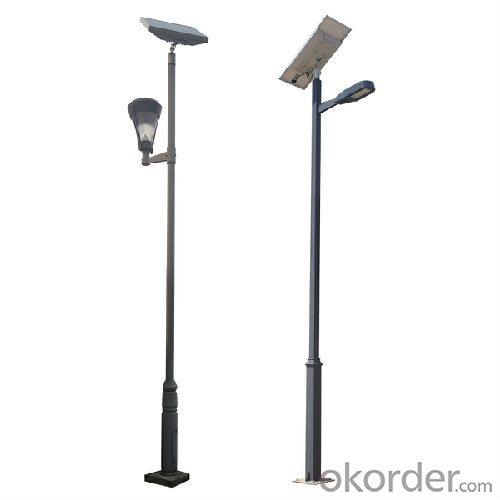
- Q: Can solar lights be used for outdoor wedding or event lighting?
- Yes, solar lights can be used for outdoor wedding or event lighting. They are a great eco-friendly and cost-effective option for providing ambient lighting in outdoor venues. Solar lights can be easily installed and do not require any electrical wiring, making them convenient for temporary outdoor setups. However, it's important to ensure that the solar lights have enough sunlight exposure during the day to fully charge for optimal performance during the evening event.
- Q: Do solar lights require special batteries?
- Yes, solar lights do require special batteries called rechargeable batteries. These batteries are designed to store and release energy efficiently, allowing the solar lights to function properly.
- Q: Can solar lights be used for bicycle path lighting?
- Yes, solar lights can be used for bicycle path lighting. Solar-powered lights are an environmentally friendly and cost-effective solution for illuminating bicycle paths. These lights collect energy from the sun during the day and use it to power LED bulbs at night, providing sufficient lighting for safe navigation on bicycle paths.
- Q: Are solar lights suitable for outdoor swimming pools?
- Yes, solar lights are suitable for outdoor swimming pools. They are a great option for illuminating the pool area as they are energy-efficient, easy to install, and require minimal maintenance. Additionally, solar lights are safe to use around water and provide a pleasant ambiance for evening swimming or poolside gatherings.
- Q: How do you choose the right solar light brightness level for security purposes?
- When choosing the right solar light brightness level for security purposes, it is important to consider the specific needs of the area you want to secure. Factors such as the size of the space, the level of potential threats, and the desired coverage area should be taken into account. Higher brightness levels are generally recommended for larger areas or areas with higher risk levels, while lower brightness levels can be sufficient for smaller spaces or areas with lower risk levels. Conducting a thorough assessment of the security requirements and consulting with professionals in the field can help in determining the appropriate brightness level for optimal security.
- Q: How do solar lights handle power fluctuations due to power spikes or transients?
- Solar lights typically have built-in protection mechanisms to handle power fluctuations caused by power spikes or transients. These mechanisms include surge protectors, voltage regulators, and capacitors. Surge protectors help divert excessive voltage spikes away from the light's internal components, preventing damage. Voltage regulators ensure a consistent and stable power supply by adjusting the voltage to meet the light's requirements. Capacitors act as energy storage devices, providing a buffer during sudden power fluctuations and helping maintain a steady power output. Overall, these protection mechanisms enable solar lights to handle power fluctuations effectively and ensure their reliable operation.
- Q: Are solar lights suitable for bike paths?
- Bike paths are indeed suitable for solar lights. These lights have gained popularity for illuminating bike paths because of the many benefits they offer. To start with, solar lights are energy-efficient as they rely on solar power to recharge their batteries during the day, eliminating the need for electricity. This makes them both environmentally friendly and cost-effective in the long term. Furthermore, installing and maintaining solar lights is a breeze. They don't require any wiring or electrical connections, which makes them a practical choice for bike paths. Moreover, they often come equipped with sensors that automatically turn them on at dusk and off at dawn, ensuring that the bike path is well-lit during the evening and night hours. In addition, solar lights provide ample illumination for bike paths, ensuring the safety of cyclists and pedestrians. They come in various designs and brightness levels, which allows for customized lighting solutions to meet different bike path requirements. Thanks to technological advancements, solar lights now come with powerful LED bulbs that offer bright and long-lasting light, enhancing visibility and reducing the risk of accidents. Lastly, solar lights are designed to withstand outdoor conditions and are durable and weather-resistant. They are often made from high-quality materials that can endure extreme temperatures, rain, and snow, ensuring their longevity and functionality. To sum up, solar lights are a practical and suitable choice for bike paths because of their energy-efficiency, ease of installation and maintenance, adequate illumination, and durability. They provide a sustainable and reliable lighting solution that enhances safety for cyclists and pedestrians while minimizing environmental impact and reducing costs.
- Q: How do solar lights handle electromagnetic interference from industrial machinery?
- Solar lights are not affected by electromagnetic interference from industrial machinery because they do not rely on electrical wiring or grid connections. They operate independently using solar panels to convert sunlight into electricity, making them immune to any interference caused by industrial machinery.
- Q: Can solar lights be used in hazardous environments?
- When using solar lights in hazardous environments, it is essential to verify that the particular light being utilized is specifically designed and certified for such locations. Hazardous environments typically encompass areas where flammable gases, vapors, or dust particles are present, such as oil refineries, chemical plants, or mining sites. In these locations, it is imperative to take special precautions to avoid any potential sources of ignition. Solar lights intended for hazardous environments are fabricated using explosion-proof materials and incorporate additional safety features, including sealing to prevent the entry of gas or dust and temperature controls to prevent overheating. To ensure compliance with safety regulations and select the appropriate solar light for the specific environment, it is vital to seek guidance from experts or manufacturers who specialize in hazardous location lighting.
- Q: How do solar lights prevent light pollution?
- Solar lights prevent light pollution in several ways. Firstly, they are designed to direct light downward, illuminating the intended area without scattering excessive light in all directions. This helps to minimize the amount of wasted light that can contribute to light pollution. Secondly, solar lights often use LED technology, which has a more focused beam and emits a specific wavelength of light, reducing the chances of it interfering with the natural night sky. Lastly, since solar lights operate using energy from the sun, they don't require additional power sources, eliminating the need for excessive street lighting that can contribute to light pollution.
Send your message to us
Solar Light Trees - New Energy Solar Street Light Product
- Loading Port:
- Ningbo
- Payment Terms:
- TT or LC
- Min Order Qty:
- 1 set
- Supply Capability:
- 5000 set/month
OKorder Service Pledge
OKorder Financial Service
Similar products
Hot products
Hot Searches
Related keywords
